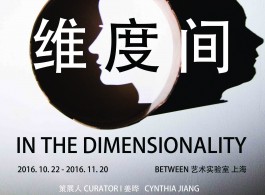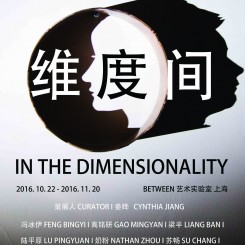The biggest assumption premise of Cosmology is that the universe is three- or four-dimension and infinite. However, in reality, the universe is composed of five dimensions: one dimension is physical, another is temporal, and the other three are spatial.
Art, as an abstract spiritual product, also relies on specific material carriers. All substances have form. Materials, as spiritual carriers, are endowed with forms by artists. Feng Bingyi chooses to replace the illusory dream scape and mythological animals of legends with boats. She utilizes personal experiences to turn imagery into visible objects, which allows us to conduct free dialogs between physical objects and virtual space. In the material dimension, even some ordinary objects enable spectators to understand the whole process of art creation and even form associations – a tree, a table, a sketchpad, and some pigments… These objects could be materials, tools, or sources for artists’ creations, but these objects are more likely to come directly from one part of the work. Nature scenes like common plants, which may be deemed by artists as source materials for drawing, appear in artwork more easily. However, these objects are transformed into two-dimensional figures – even symbols – by thoughts influenced by mass media, and given almost colorful, overlaid spectrum and more abstract artistic language. Having been repeatedly sorted, experimented, and refined, these objects are in possession of more plasticity and randomness, adding unique artistic language to the works. Nathan Zhou is especially good at using this language. He extends the strong individual touch of his easel paintings into familiar chairs and tables, freely creating his works in the physical world.
Everything has its temporal trace and evolves into different phases with time. Su Chang chose to be stationed on-site to work on his creation. He directly uses the walls of his exhibition space as the medium of his composition. Under his sculpting skill, familiar materials display a new and sentimental texture. As brand-new works, these distinct textures make us witness the changes in the artist’s emotions over time. Time is linear, marking all the events that take place during the artist’s creation process. We can try to understand it as an example of relativity: a straight ruler stays static in the three-dimensional space, but spun on the spot, its coordinates vary. Gao Mingyan makes use of curtains as a space for creation, a space which lies between the spatial and temporal dimensions. Curtains freely flow as time goes by. This kind of flow not only activates external time and space, but also further tries to measure through dynamic time the static objects displayed on the curtains. In the dimension of time, day and night coexist and switch freely, symbolizing the external progress and internal cycle in an artist’s creation. Wu Junyong’s work is inspired by meteor craters, which took shape in the initial phase of the solar system’s formation. The impact marks left by cosmic meteors resulted in a change in the alteration between day and night as the result of Earth’s rotation. In fact, this change also symbolizes the entire universe’s traces on its axis of time. All phenomena of human society proceed with the passage of time.
In the microcosm of materials, everything can be infinitely small, while in the physical space of the universe, everything can be indefinitely large. All of these ideas provide us extensive room for thought. Space is a kind of form in which materials exist. Space and materials occupy and complement each other, enabling human senses to experience their objective existence. Zhang Ruyi uses iron gates and industrial cement to break through spectators’ conventional thoughts regarding the three-dimensional space of materials, where life materials and self-consciousness erode each other mutually. Therefore, space is a diverse dimension that reflects human being’s cognitive or psychological space. The bathtub – a specific object that is used here as a special space in which to conduct a dialog with Liang Ban’s works. In it, the shaking icons on mobile phones serve as a medium fabricating the fear of being inundated by water. However, the bathtub further simulates reality, which supplements the virtual space and further gives birth to space. Space is also grasped by humankind’s abstract thinking and objectively exists through association with external objects. Lu Pingyuan creates a brand-new simulated space through specific story plots, not restricted by any materials or temporal variations. His works can be seen as a parallel external dimensional space, and they are also invisibly linked with materials, time, and space in the visible world.
Dimensional space belongs either to an individual or to everyone. Here, materials and time, materials and space, and time and space, are woven into objects respectively and exist simultaneously. Therefore, what you can see is not all there is.


